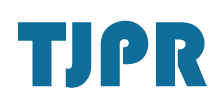
Emerging serious psychopathology associated with abuse of Cannabis (Indian Hemp, Marijuana)
Hope O Obianwu
Professor of Pharmacology and Director of Nigerian Training Course on Drug Abuse, Department of Pharmacology & Toxicology, University of Benin, Benin City, Nigeria
Tropical Journal of Pharmaceutical Research 2005; 4(1): 329-330
ISSN: 1596-5996
Editorial
Abuse of alcohol, tobacco and other drugs (substance abuse) continues to be one of the most significant medical, social and economic problems facing mankind. It is an important factor in disruption of family and social relationships, accidents, crimes, violence, disease and illnesses, disability, suicide and homicide and loss of productivity.
Globally, it is estimated that about 200 million persons or 5% of world population aged 15 – 64 have used drugs of abuse at least once in 20031. About 161 million persons or 4% of World population (aged 15 – 64) are estimated to have used cannabis during the same period. Estimates for cocaine, heroin and amphetamine–type drugs are: 13.7 million (0.3%), 10.6 million (0.23%) and 26.2 million (0.6% of world population aged 15 – 64), respectively. It is clear that cannabis is by far the most commonly used illicit drug world–wide (4% of world population compared to 1% for all other drugs of abuse combined).
The most psychoactive constituent of cannabis is the 9-delta tetrahydrocannabinol (THC). The main effects of cannabis are exerted through the cannabinoid receptors which are located in various parts of the brain, including the cerebellum, hippocampus, cerebral cortex, nucleus accumbens, basal ganglia, hypothalamus and the brain stem. THC is rapidly absorbed and the effects are experienced within minutes. If the cannabis is of low potency, the effects may be subtle and brief. Effects of cannabis last for 2 – 3 hr after a single cigarette. Regular users prolong effects by repeated smoking. When taken orally, onset of action is delayed for about 30 min to 2 hr but action is prolonged. Acute intoxication and chronic use of cannabis are associated with negative consequences and substantial health burden. Perceptual and psychic changes are biphasic, an initial euphoria (“high”) is followed by drowsiness. Time sense is altered, hearing is less selective, vision is sharper with many vision distortions. Depersonalization, difficulty in concentrating and thinking, dream – like states are prominent2. Acute psychomotor effects include impairment of coordination and reaction time and impaired driving skills.
The effects of cannabis are highly variable and depend upon the dose, pattern of use, previous experience with the drug, concurrent use with other drugs, user’s expectations and social environment and the mood of the user.
A substantial proportion of persons who use cannabis also engage in alcohol consumption, a combination that produces a synergistic increase in the effects which are associated with more problems than either substance alone3. Experiments in rats by Professor Yasin Hurd of Karolinska Institute, Stockholm, Sweden, show that chronic periodic use of cannabis can interfere with brain development. This may suggest that children and young adults who use cannabis over long periods would be more prone to the psychopathology of the drug. Cannabis induced conjunctival reddening and the increase in pulse rate correlate quite well in time with the appearance and duration of the psychic effects as well as the plasma concentrations of the drug2.
Cannabis use and the associated problems are often ignored or marginalized by health policy makers, public health practitioners, researchers and by many substance abuse treatment providers despite being the most commonly used substance by persons presenting for treatment in recent years (more than 80% in some countries). This may not be unconnected with the observation that a significant number of cannabis users who present for treatment also use other drugs, such as cocaine and opioids. Attention is invariable paid to the management of cocaine and opioid associated problems rather than those of cannabis. This may lead to under diagnosis of cannabis related problems.
Despite the fact that cannabis associated psychopathology was recognized several decades ago, especially in the developing countries, such as Nigeria and in the last two decades in many developed countries, there is a need for development of effective treatment models targeted at cannabis. The rising prevalence of cannabis use, its readily availability and increased potency, low prices (as low as 7 US cents per cigarette in countries such as Nigeria), wide spread social tolerance and earlier onset of use, are likely to increase the number of persons that will experience cannabis associated problems.
Available literature provide ample evidence for cannabis associated psychopathology3-9 There is therefore urgent need to develop effective models of treatment for cannabis associated problems.
References
1. UNODC. World Drug Report. 2005. 182 (2): 148-53.
2. Hollister LE. Health aspects of cannabis users. Pharmacological Reviews 1986; 38: 1-20.
3. Dennis M, Babor TF, Roeback MC and Donaldson J. Changing the focus: the case for recognizing and treating cannabis use disorders. Addiction. 2000; 97 (Suppl 1): 4-15.
4. Binitie A. Psychosis following ingestion of hemp in children. Psychopharmacologia (Berl). 1975; 44: 301-2.
5. Adams B and Martin BR. Cannabis Pharmacology and Toxicology in animals and humans. Addiction. 1996; 91: 1585-614.
6. Arseneaut L, Cannon M, Witton J and Murray RM. Causal association between cannabis and psychosis: examination of the evidence. British J. Psychiatry. 2004; 184: 110-7.
7. Hall W and Dagenhardt L. Cannabis use and psychosis: a review of clinical and epidemiological evidence. Australian and New Zealand J. Psychiatry. 2000; 34: 26-34.
8. Thacre VR and Shukla A. Cannabis psychosis and paranoid schizophrenia. Arch. Gen. Psychiatry. 1976; 33: 383-6.
9. Monshouwer K, Dorsselaer S, van Verden J, Bogt TT, Graff RD and Volleber W. Cannabis use and mental health in secondary school children. British J. Psychiatry. 2006; 182 (2): 148-53.
Key words: Cannabis, drug abuse psychopathology.
|
|
||
|
||
|
|
||
|
||
|
e-mail
Alert |
||
|